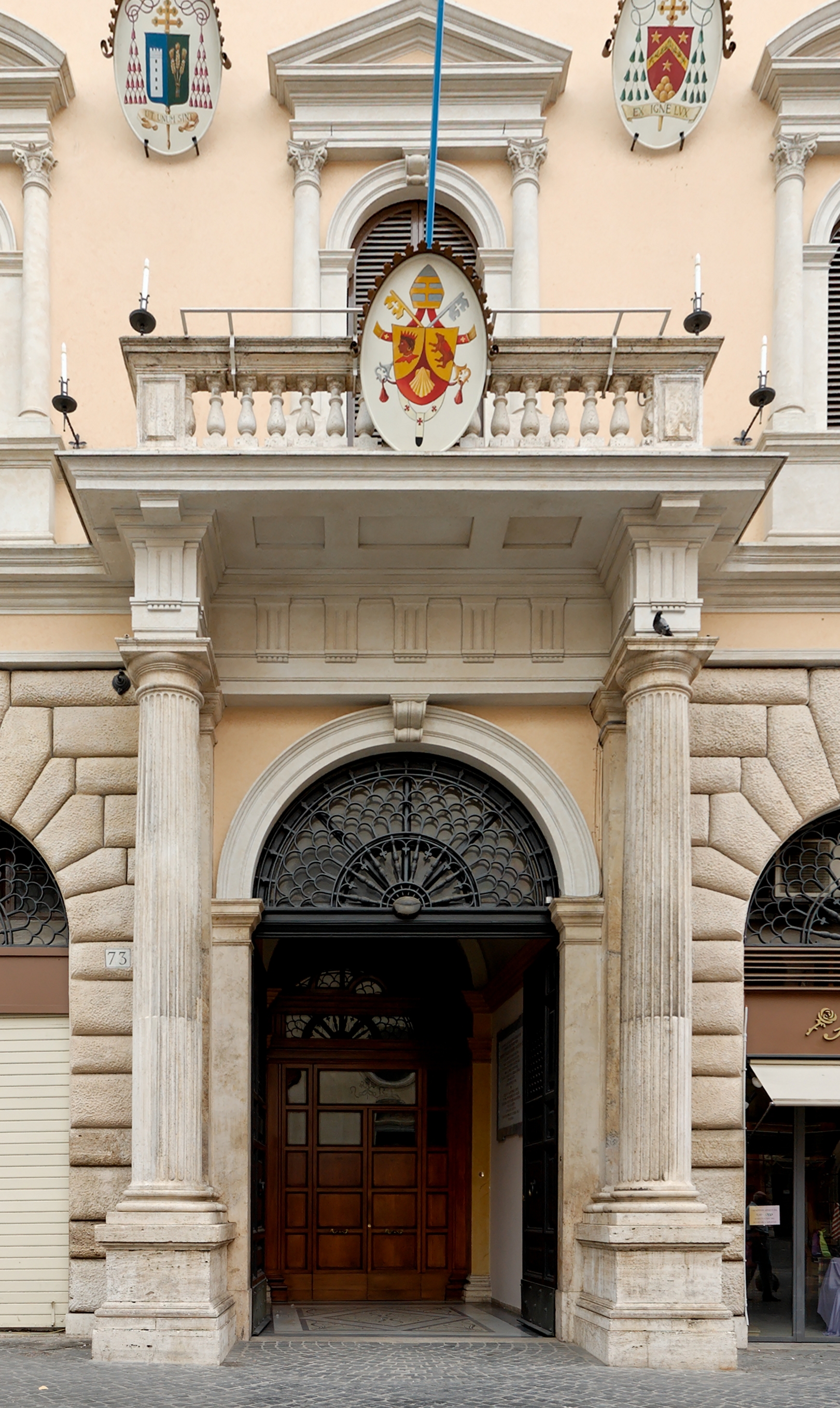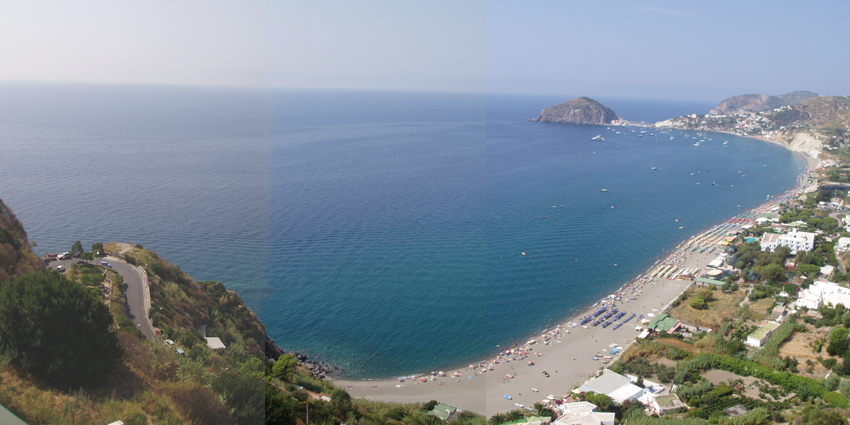|
Luigi Lavitrano
Luigi Lavitrano (7 March 1874 – 2 August 1950) was an Italian cardinal of the Catholic Church who served as Archbishop of Palermo from 1928 to 1944, and as prefect of the Sacred Congregation for Religious from 1945 until his death. Lavitrano was elevated to the cardinalate in 1929. Biography Born in Forio, Lavitrano lost his entire family in an earthquake in 1883 that devastated the island of Ischia. He studied at the Pontifical Urbaniana University, the Pontifical Roman Athenaeum S. Apollinare, the Royal University, and the Pontifical Leonine Institute in Rome. He was ordained to the priesthood on 21 March 1898, and then taught at the Leonine Institute until 1910, when he became its rector. He was raised to the rank of Privy Chamberlain of His Holiness on 8 March 1904. On 25 May 1914, Lavitrano was appointed Bishop of Cava e Sarno by Pope Pius X. He received his episcopal consecration on the following 21 June from Basilio Cardinal Pompili, with Bishops Giovanni Reg ... [...More Info...] [...Related Items...] OR: [Wikipedia] [Google] [Baidu] |
His Eminence
His Eminence (abbreviation H.Em. or H.E. or HE) is a style (manner of address), style of reference for high nobility, still in use in various religious contexts. Catholicism The style remains in use as the official style or standard form of address in reference to a cardinal (Catholicism), cardinal of the Catholic Church, reflecting his status as a Prince of the Church. A longer, and more formal, title is "His (or Your when addressing the cardinal directly) Most Reverend Eminence". Patriarchs of Eastern Catholic Churches who are also cardinals may be addressed as "His Eminence" or by the style particular to Catholic patriarchs, His Beatitude. When the Grand master (order), Grand Master of the Sovereign Military Order of Malta, the head of state of their sovereign territorial state comprising the island of Malta until 1797, who had already been made a Reichsfürst (i.e., prince of the Holy Roman Empire) in 1607, became (in terms of honorary order of precedence, not in the act ... [...More Info...] [...Related Items...] OR: [Wikipedia] [Google] [Baidu] |
Archbishop Of Palermo
The Roman Catholic Metropolitan Archdiocese of Palermo ( la, Archidioecesis Panormitana) was founded as the Diocese of Palermo in the first century and raised to the status of archdiocese in the 11th century."Archdiocese of Palermo" ''''. David M. Cheney. Retrieved February 29, 2016"Metropolitan Archdiocese of Palermo" ''GCatholic.org''. Gabriel Chow. Retrieved February 29, 2016 The archbishop is |
Roman Colleges
The Roman Colleges, also referred to as the Pontifical Colleges in Rome, are institutions established and maintained in Rome for the education of future ecclesiastics of the Catholic Church. Traditionally many were for students of a particular nationality. The colleges are halls of residence in which the students follow the usual seminary exercises of piety, study in private, and review the subjects treated in class. In some colleges there are special courses of instruction (languages, music, archaeology, etc.) but the regular courses in philosophy and theology are given in a few large central institutions, such as Pontifical Urbaniana University, the Pontifical Gregorian University, the Pontifical Lateran University, and the Pontifical University of Saint Thomas Aquinas, ''Angelicum''. Purpose The Roman colleges, in addition to the obvious advantages for study which Rome offers, allows the students to have a different experience of university life from the one of the irrespective ... [...More Info...] [...Related Items...] OR: [Wikipedia] [Google] [Baidu] |
Ischia
Ischia ( , , ) is a volcanic island in the Tyrrhenian Sea. It lies at the northern end of the Gulf of Naples, about from Naples. It is the largest of the Phlegrean Islands. Roughly trapezoidal in shape, it measures approximately east to west and north to south and has about of coastline and a surface area of . It is almost entirely mountainous; the highest peak is Mount Epomeo, at . The island is very densely populated, with 62,000 residents (more than 1,300 inhabitants per square km). Ischia is also well known for its thermal water and thermal gardens used since ancient times. Its volcanic nature makes Ischia one of the largest spas in Europe. Ischia's thermal waters are alkaline. Already the first Euboic settlers (8th century BC), as evidenced by the numerous archaeological finds found in the site of Pithecusa and preserved in thArchaeological Museum of Villa Arbustoin Lacco Ameno, appreciated and used the waters of the island's thermal springs. The Greeks, in fact, used ... [...More Info...] [...Related Items...] OR: [Wikipedia] [Google] [Baidu] |
Earthquake
An earthquake (also known as a quake, tremor or temblor) is the shaking of the surface of the Earth resulting from a sudden release of energy in the Earth's lithosphere that creates seismic waves. Earthquakes can range in intensity, from those that are so weak that they cannot be felt, to those violent enough to propel objects and people into the air, damage critical infrastructure, and wreak destruction across entire cities. The seismic activity of an area is the frequency, type, and size of earthquakes experienced over a particular time period. The seismicity at a particular location in the Earth is the average rate of seismic energy release per unit volume. The word ''tremor'' is also used for Episodic tremor and slip, non-earthquake seismic rumbling. At the Earth's surface, earthquakes manifest themselves by shaking and displacing or disrupting the ground. When the epicenter of a large earthquake is located offshore, the seabed may be displaced sufficiently to cause ... [...More Info...] [...Related Items...] OR: [Wikipedia] [Google] [Baidu] |
Prefect
Prefect (from the Latin ''praefectus'', substantive adjectival form of ''praeficere'': "put in front", meaning in charge) is a magisterial title of varying definition, but essentially refers to the leader of an administrative area. A prefect's office, department, or area of control is called a prefecture, but in various post-Roman empire cases there is a prefect without a prefecture or ''vice versa''. The words "prefect" and "prefecture" are also used, more or less conventionally, to render analogous words in other languages, especially Romance languages. Ancient Rome ''Praefectus'' was the formal title of many, fairly low to high-ranking officials in ancient Rome, whose authority was not embodied in their person (as it was with elected Magistrates) but conferred by delegation from a higher authority. They did have some authority in their prefecture such as controlling prisons and in civil administration. Feudal times Especially in Medieval Latin, ''præfectus'' was used to r ... [...More Info...] [...Related Items...] OR: [Wikipedia] [Google] [Baidu] |
Catholic Church
The Catholic Church, also known as the Roman Catholic Church, is the largest Christian church, with 1.3 billion baptized Catholics worldwide . It is among the world's oldest and largest international institutions, and has played a prominent role in the history and development of Western civilization.O'Collins, p. v (preface). The church consists of 24 ''sui iuris'' churches, including the Latin Church and 23 Eastern Catholic Churches, which comprise almost 3,500 dioceses and eparchies located around the world. The pope, who is the bishop of Rome, is the chief pastor of the church. The bishopric of Rome, known as the Holy See, is the central governing authority of the church. The administrative body of the Holy See, the Roman Curia, has its principal offices in Vatican City, a small enclave of the Italian city of Rome, of which the pope is head of state. The core beliefs of Catholicism are found in the Nicene Creed. The Catholic Church teaches that it is the on ... [...More Info...] [...Related Items...] OR: [Wikipedia] [Google] [Baidu] |
Cardinal (Catholicism)
A cardinal ( la, Sanctae Romanae Ecclesiae cardinalis, literally 'cardinal of the Holy Roman Church') is a senior member of the clergy of the Catholic Church. Cardinals are created by the ruling pope and typically hold the title for life. Collectively, they constitute the College of Cardinals. Their most solemn responsibility is to elect a new pope in a conclave, almost always from among themselves (with a few historical exceptions), when the Holy See is vacant. During the period between a pope's death or resignation and the election of his successor, the day-to-day governance of the Holy See is in the hands of the College of Cardinals. The right to participate in a conclave is limited to cardinals who have not reached the age of 80 years by the day the vacancy occurs. In addition, cardinals collectively participate in papal consistories (which generally take place annually), in which matters of importance to the Church are considered and new cardinals may be created. Cardina ... [...More Info...] [...Related Items...] OR: [Wikipedia] [Google] [Baidu] |
Emeritus
''Emeritus'' (; female: ''emerita'') is an adjective used to designate a retired chair, professor, pastor, bishop, pope, director, president, prime minister, rabbi, emperor, or other person who has been "permitted to retain as an honorary title the rank of the last office held". In some cases, the term is conferred automatically upon all persons who retire at a given rank, but in others, it remains a mark of distinguished service awarded selectively on retirement. It is also used when a person of distinction in a profession retires or hands over the position, enabling their former rank to be retained in their title, e.g., "professor emeritus". The term ''emeritus'' does not necessarily signify that a person has relinquished all the duties of their former position, and they may continue to exercise some of them. In the description of deceased professors emeritus listed at U.S. universities, the title ''emeritus'' is replaced by indicating the years of their appointmentsThe Protoc ... [...More Info...] [...Related Items...] OR: [Wikipedia] [Google] [Baidu] |
Roman Catholic Archdiocese Of Palermo
The Roman Catholic Metropolitan Archdiocese of Palermo ( la, Archidioecesis Panormitana) was founded as the Diocese of Palermo in the first century and raised to the status of archdiocese in the 11th century."Archdiocese of Palermo" ''''. David M. Cheney. Retrieved February 29, 2016"Metropolitan Archdiocese of Palermo" ''GCatholic.org''. Gabriel Chow. Retrieved February 29, 2016 The archbishop is |
Sapienza University Of Rome
The Sapienza University of Rome ( it, Sapienza – Università di Roma), also called simply Sapienza or the University of Rome, and formally the Università degli Studi di Roma "La Sapienza", is a Public university, public research university located in Rome, Italy. It is one of the List of largest universities by enrollment, largest European universities by enrollments and List of oldest universities in continuous operation, one of the oldest in history, founded in 1303. The university is one of the most prestigious Italian universities in the world, commonly ranking first in national rankings and in Southern Europe. In 2018, 2019, 2021 and 2022 it ranked first in the world for classics and ancient history. Most of the Italian ruling class studied at the Sapienza. The Sapienza has educated numerous notable alumni, including many List of Nobel laureates, Nobel laureates, President of the European Parliament, Presidents of the European Parliament and European Commissioners, heads ... [...More Info...] [...Related Items...] OR: [Wikipedia] [Google] [Baidu] |




.jpg)
